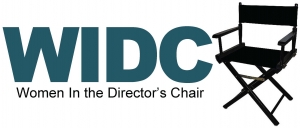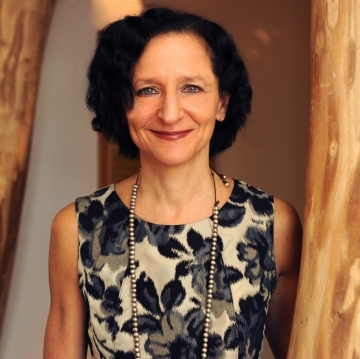Sara Diamond Interview with Carol Whiteman, WIDC Producer
Notes by Rena Kawabata, WIDC 2015-16 Coordinator
In preparation for WIDC 20th Anniversary
November 19, 2015Preamble: We’re preparing for our WIDC 20th Anniversary and since you are one of the co-creators of WIDC, we want to include your voice in the celebration. We’re aiming to create a space on the WIDC web site to tell the story of how WIDC began. Thanks for speaking with us! So, let’s jump right in.
CW: What led up to the discovery of WIDC from your perspective?
SD: It was a fantastic moment of convergence. The Banff Centre, film & television program became a unified department of Media & Visual Arts. I was the Executive Director. It was fairly early into my career at Banff. One of my focuses was getting creative work and artists on to [television] programs. We were very conscious of the small number of women actually making their way into directing feature films and television.
CW: What brought us all together as collaborators?
SD: In 1992, I arrived on the scene at Banff. I began looking at what was happening in some other countries: Australia & UK. There was a concerted effort on the part of women to create specific training programs, learning opportunities, boot camps outside of college or university programs with governments of those countries as well. The aim was for women to be successful in those commercial/competitive worlds of feature films and television (or just broadcast). The Canadian Film Centre was not doing this. Women in Film & Television emerged later. You were in Vancouver with Vancouver performers … [ACTRA]. There was a resonance of interest from Federal government. You and I were introduced, and we put our simultaneous thinking together.
CW: What are / were your thoughts about the development / design of WIDC?
SD: It was a feminist way of discovering each other and discovering alignments. You had that relationship with Peg [Campbell] and I also knew Peg. We said, “Okay, were going to do this, and we’ll do it at the Banff Centre, all on $60,000 which was brought up to about $106,000 after all the pieces put together.
CW: As we went along, what was learned and how were challenges faced?
SD: I just didn’t take ‘no’ for an answer while I was at Banff. At that time, I was running the productions unit and the programs unit. It was a full-scale experience without a lot of money to run it. The production people at Banff were quite inspired by the [WIDC] event.
CW: What were / are your big take-aways about WIDC?
SD: Looking at the data, we have a really bad problem here. Two decades have gone by and the data have not gotten better, it’s getting worse. That’s why I got involved with Women in View, Sex Money Media in 2010. We are collectively still working on those issues. When I helped to initiate that [SMM], I had gotten back into this issue because I was so frustrated with how it wasn’t moving forward. WIDC has raised consciousness/awareness.
Those are things that I think about when I think about the discovery of WIDC: necessity; meeting of minds; a couple of strong women; Carol, warning people in a motherly, caring, humorous way of the journey ahead. There was virtually no failure at WIDC. Everyone who went through it got something out of it.
And then of course, we just kept scaling up the quality of the production environment. We did a lot of good thinking work about the several stages of the process: Writer/Producer Role vs. Writer/Director Role; where the roles overlap. Are we asking too much of directors to be writers; working effectively in the industry, because they could think about the roles; more advisory from industry professionals. And then you broke it into several modules.
What I remember was working to integrate more of a perspective on the emerging digital world. Women in the program had the ancillary tools about marketing; women in technology.
The reality is that we want to be positive, but I had to fight for it [WIDC] at the Banff Centre. It was resource intensive. Philosophically it was not always aligned with other goals at Banff. It continued, it was protected, it had time to raise money when it needed to.
CW: Sara protected the [WIDC] program and it was done most of the time without us being aware of it.
SD: The biggest challenges with Banff were fiscal. Banff went in and out of its own efficiency pains. I was always good at raising support and funding for my programs. WIDC was a beneficiary of that. Banff faced fiscal challenges on and off. There were a significant number of rooms that would not be available for other activities. It [WIDC] always had to be made a priority. What that meant was consistently helping the leadership [at Banff] understand the importance of the program. People who were marginalized in those communities needed this opportunity. We were playing a service role / professional development role.
The challenges were in the management side. Who was responsible for what? Which resources were needed. It took a lot of planning.
Then there was a transition in terms of the media arts department. That added somewhat of a layer of complexity, to know that the resource was there for you. WIDC required an in-kind donation from Banff. It required complex budgeting. It was a big program that drove a lot of resources. Making sure that people understood the ongoing value of it was key. Everyone wanted to make sure that the program was top quality. Then we changed the structure to include script development and production.
CW: And we’re now bringing the women directors to the market, with a collaboration with Whistler Film Festival. We have a platform to announce the Feature Film Award winner. It is also great to have Canadian and International directors leading the program. These are exciting developments. Are there any highlights from WIDC that you’re especially proud of?
SD: I was so proud that we were able to get significant support for Indigenous women. The phenomenal participation of the unions, and the quality of that participation. It was exciting to work with these talents who were happy to mentor emerging directors. The variety, the breadth of what was produced and the kind of scripts and visions and beautiful complex challenging quality of what actually came out of these workshops, and for me the reality that some of these works went on to be produced for television or films. It was really inspiring for performers, for people to have their best great opportunity to work with Canadian directors, especially for Canadian talent.
CW: Any additional thoughts?
SD: People are now struggling between low budgets and big budgets. We need to allow time for rehearsal. Also, not everybody is right for university/college programs. It requires some financial privilege. There is sometimes structural, societal power struggle. When I look at the whole experience, I think it was an importance experience. I’m glad that WIDC is still alive and that you, Carol, are still very much at the helm. “There are times when there’s a convergence of vision, and when you get that feeling in your gut, you’ve just got to act!”
Sara DiamondWIDC News Editor2019-03-04T21:50:03-08:00

